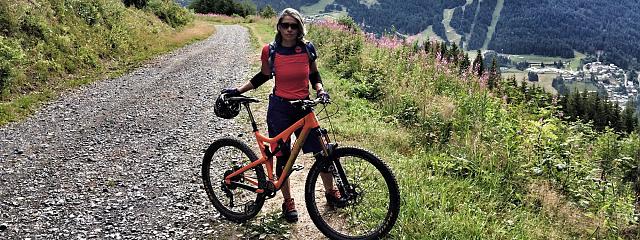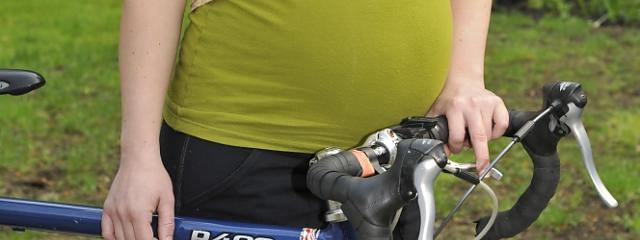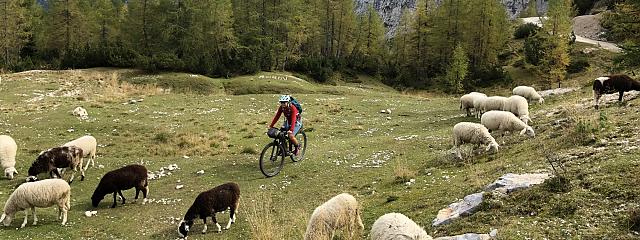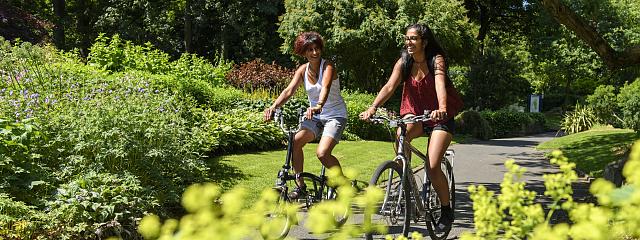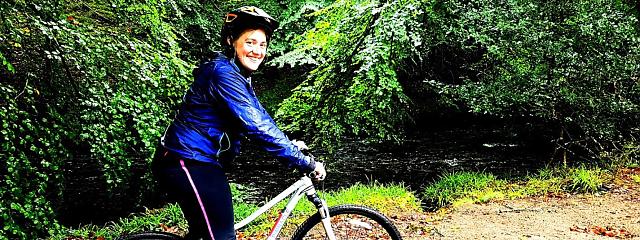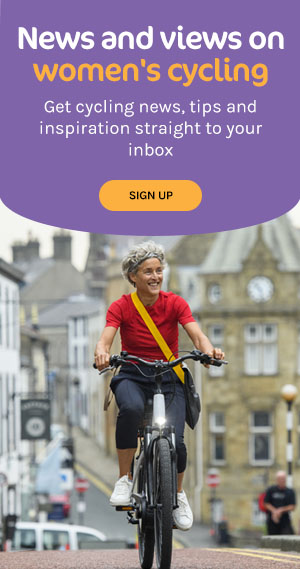
Cycling with your period
Cycling with your period
For many of us, we take the arrival of our monthly period into consideration when planning holidays, events and, of course, cycling adventures. However, there is one thing I’ve learned over the years, and that’s not to let a little blood stop you from doing what you enjoy.
With thanks to feminine hygiene companies and healthcare professionals, we have a myriad of options available to us when it comes to cycling through our period.
How does a period affect a woman’s body
Hormones follow a monthly cycle, typically made up of four key phases, lasting for approximately 28 days in total. Each phase sees a rise and fall in our hormones which prepares our body for the release of an egg that’s ready to be fertilised. When that egg isn’t fertilised, the blood-filled cushion lining of the uterus begins to break down and passes out over approximately five days, taking the egg with it.
Phase 1: Menstrual
This is the phase when the lining of the uterus begins to break down, causing us to bleed for approximately five days. Other symptoms can manifest, such as abdominal cramping, back pain and lethargy, which are the last things you want to accompany you on a bike ride.
However, this is actually a great time to get out on your bike and pedal through it. Exercise helps the flow of venous blood, which increases prostaglandins production, and it’s this chemical that helps to reduce discomfort from cramping.
During the menstrual phase, oestrogen levels are low, which causes our body to burn carbohydrates as a fuel, rather than fat. Because of the increase in insulin sensitivity, our bodies will try to get the most out of glycogen.
Phase 2: Follicular
After menstruation has finished, oestrogen levels begin to rise, which promotes the growth of follicle-stimulating hormone (FSH), which is responsible for the development of our ovaries. However, there is also a rise in testosterone, which helps sculpt muscle mass and build connective tissue between bones and muscles.
Because of this, women tend to gain more strength during the first half of their cycle, rather than the second.
Phase 3: Ovulation
Ovulation occurs midway through the menstrual cycle, when an egg is released from an ovary, ready to be fertilised; this signifies the start of the Luteal phase. During this phase, our oestrogen levels increase, which can leave women feeling more emotional than usual.
Another change to occur is in the fuel source, which switches from carbohydrates to fats due to a slight rise in our metabolic rate, meaning you’ll have more energy for riding bikes!
Phase 4: Luteal
Once an egg has been released from an ovary, oestrogen levels begin to fall, taking serotonin with them, which is why we can sometimes feel slightly more irritable around this time. Meanwhile, progesterone – the sedating hormone – reaches its peak to carry on maintaining the uterine walls.
Invest in a good pair of padded shorts and don’t wear underwear inside the shorts
Pradnya Pisal, consultant gynaecologist
Which products are best while cycling?
There is no ‘right’ sanitary product for everyone. Just like your bike set-up, it’s about what works for you. Mrs Pradnya Pisal, a consultant gynaecologist and cyclist, advises that all cyclists should “invest in a good pair of padded shorts and don’t wear underwear inside the shorts”. By not wearing underwear beneath your padded shorts, you’re reducing the number of seams that could irritate your skin and improving the breathability of your undercarriage.
Typically made from rayon and cotton, tampons have been used for thousands of years to absorb menstrual flow. They are disposable after each use, and straightforward to use, especially on long-distance rides when you need to make a quick change. Be sure to take your sanitary waste with you or dispose of it properly when out on a ride.
If you’d prefer a reusable product, then a menstrual cup may be your answer. Often constructed from silicone, these cups sit inside your vagina and collect your menstrual flow for up to eight hours. All you have to do is wash it thoroughly and replace it when it’s full - no need for waste! However, if you’re planning on a long ride, consider your options for emptying, washing and replacing your menstrual cup safely.
Liners and pads are ideal if you have a relatively light flow or if you prefer not to use internal means. These can be easily placed within your chamois shorts. However, their cotton and plastic construction causes pads to be less breathable when cycling and can result in a build-up of heat.
Top tips to ease pain
There are plenty of ways to help alleviate the discomfort if you suffer from period pains. Here are a few top tips for making your period as comfortable as possible.
It’s essential to keep your fluid levels topped up with both water and water-based foods. Warm beverages can increase the blood flow to the skin, which can help relieve cramping, while water-based foods such as celery, watermelon and lettuce also help maintain fluids in the body.
Cramps are a result of tense muscles, so increasing your intake of calcium helps to soothe menstrual cramps as it aids with toning the muscles. Add calcium-rich foods such as sesame seeds and almonds to your diet; these are also great to snack on while riding.
The common cold is often treated with home remedies like ginger. But did you know that ginger also helps alleviate period pains, too? Try grating a small amount of raw ginger into a mug of warm water. The warmth will also help to soothe cramps by increasing blood flow.
We know that exercise releases BDNF and endorphins, which are also known as ‘happy chemicals’. These chemicals act as natural pain relief for menstrual cramps and improve mood levels.
A tried-and-tested method for most is to apply heat to the abdomen with a hot water bottle or heat pads. The heat promotes venous blood flow in the body, which supports the production of pain-relieving chemicals.
So, don’t let your period get in the way of riding your bike. Listen to your body and work with it to stay on top of menstrual symptoms so you can enjoy cycling every day of the month.
For more information about your menstrual cycle, speak with your local healthcare professional.






